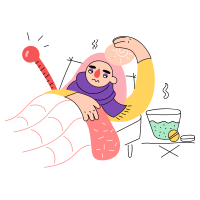
Wound therapy is a medical procedure that aims to help wounds heal faster and better. Wounds can be classified as acute or chronic, depending on how long they have been present and how well they respond to treatment. Acute wounds are those that heal within a few weeks, while chronic wounds are those that persist for more than three months or fail to progress through the normal stages of healing. Chronic wounds can be caused by various factors, such as diabetes, poor circulation, infection, pressure, trauma, or radiation. Chronic wounds can have a negative impact on the quality of life of patients, as they can cause pain, discomfort, odor, infection, and reduced mobility.
For chronic wounds, MedCare offers a wide range of wound care supplies to help you manage treatment in the comfort of your own home.
